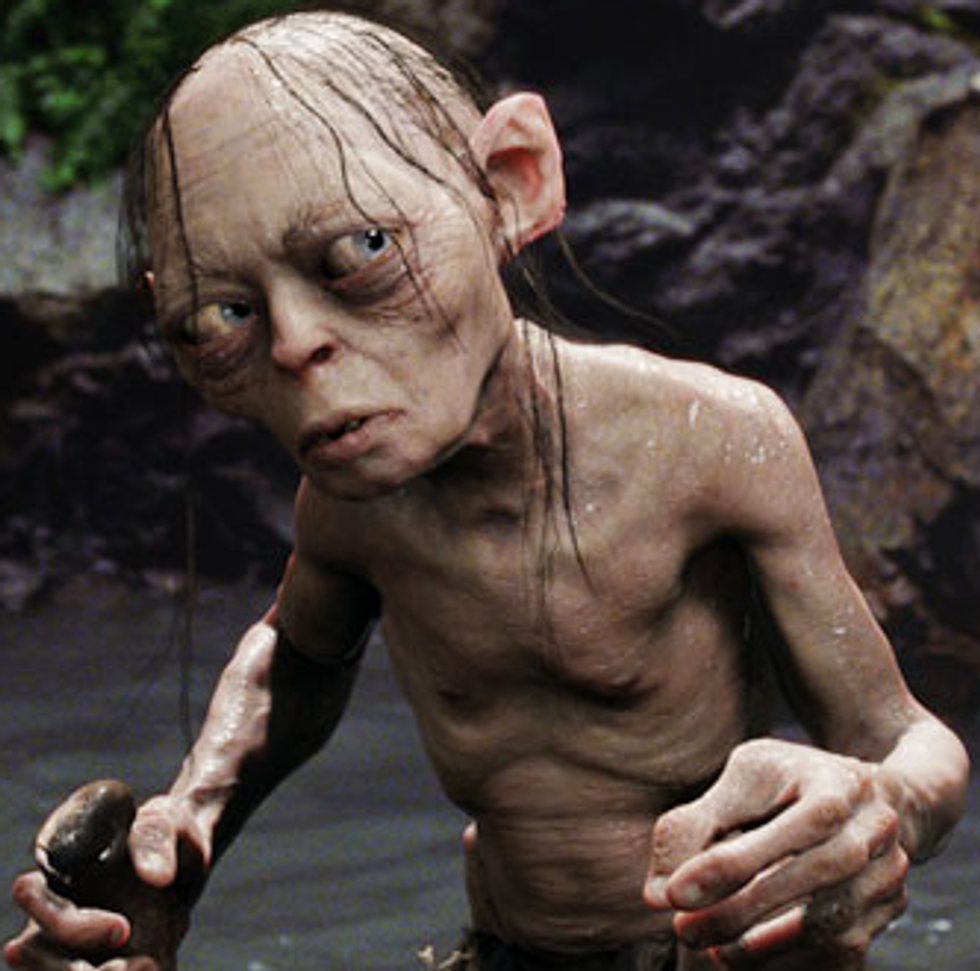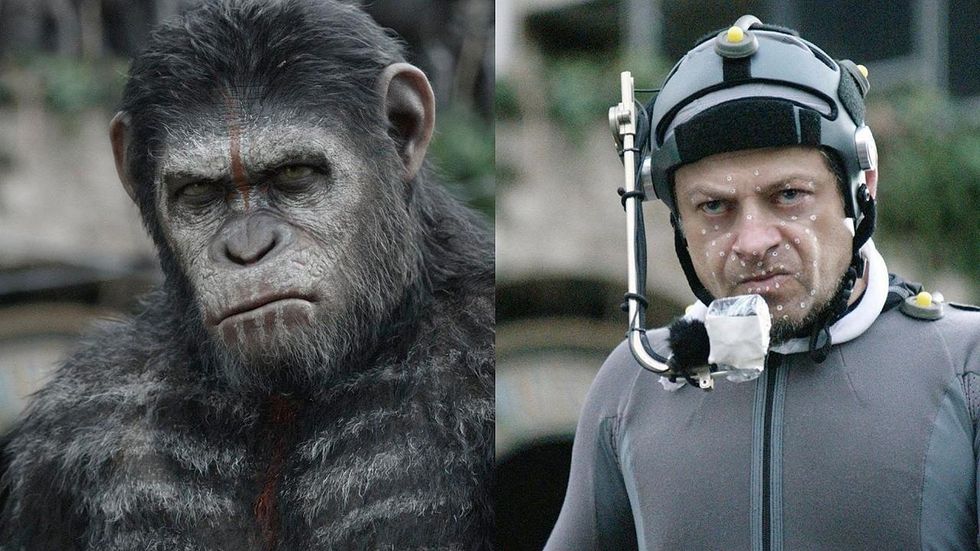Since the early days of Hollywood, special effects have constantly been advancing. Even now, just over one hundred years from A Trip to the Moon, you can go online and download a basic filmmaking program for free or a low cost – some can even handle minor digital effects. And even older than film effects, is putting actors in makeup and costumes to change their appearance – something as old as performance itself. In the modern era, the use of computer generated imagery has allowed for actors to play any part, in any environment, no matter how large. Motion-capture is one of the most well known aspects of modern filmmaking, with several films, including the recent Star Wars movies, having entire lead characters created with the system. However, it is not without controversies, nor was it something that just happened.
Essentially,
motion capture is a modern-day version of rotoscoping. In the late
1930s/early 1940s,
all animation was hand-drawn frame by frame, and oftentimes there
would be something they wanted to animated that was difficult to draw
freehand – so they would take an actor in full costume, film them
doing the action, then draw over each frame. An early example would
be the World War II era Superman
cartoons, in which several close-up shots of Superman were rotoscoped
using in-studio reference actors. Eventually, rotoscoping would be
abandoned in favor of using models or highly-detailed animation,
though of course the live-action reference actors would still be used
to track motion in the animation cels. Almost thirty year later,
Ralph Bakshi produced an animated adaptation of The
Lord of the Rings,
and due to the complex nature of the story and the Middle-Earth
setting, he elected to use a much more detailed method of
rotoscoping, making little effort to hide the fact that the audience
would be seeing both cartoon characters and incredibly detailed
drawings over stunt actors. The film featured a cast of relatively
unknown actors, along with John Hurt as Aragorn and Anthony Daniels
as Legolas, and was a moderate success. This adaptation is what
brought the world of J.R.R. Tolkien to Peter Jackson, who went on to
direct the groundbreaking 2001-2003 Lord
of the Rings
trilogy – which much like the 1978 film, experimented with the
limits of special effects and blurring the line between reality and
animation.

At
the time, it wasn't possible to really capture the actor's face, and
thus Gollum's facial movements were completely CGI. Andy Serkis
returned to motion capture on Peter Jackson's 2005 King
Kong, cementing
his career in the field. By 2006, Weta was continuing to advance
their award-winning effects, and during production on James Cameron's
motion-capture filled Avatar,
developed a headset-mounted camera that would be facing the actor and
recording every facial expression and movement, so that the entire
portrayal could be presented through the CGI overlays. This instantly
proved incredibly useful, and allowed for the performances of the
cast to be in the final product, not just used as something to match
up the voices to. Avatar
was another big hit, breaking several box office records and the
effects being highly praised. This would continue to be developed and
enhanced, and within a matter of years, the use of the head-mounted
camera would become the norm, further pushing away the concept of
mo-cap actors being “glorified voice actors.”
The Planet of the Apes series has continued to further push ahead the capabilities of motion capture. 2011's Rise of the Planet of the Apes gave us a hyper-realistic and incredibly detailed CGI ape, Caesar, played by Andy Serkis (as with many motion capture characters). Instead of filming on a soundstage separate from the main set, Weta was able to have the actors on set, and then isolate their performance without needing to film it all over again. The sequel, Dawn of the Planet of the Apes added to the abilities of “digital makeup,” with the ape civilization looking near photorealistic, to very high praise from critics and audiences. Through these films, the potential for uses of the system have been increased, even to a point of using them to make things simple for the on-set actor and the digital effects teams. For example,Tom Hollad wore a mo-cap suit for much of the filming on the upcoming Avengers: Infinity War so that the effects could all be added in without having to fight against the bright color of his Spider-Man costume and the greenscreen. A similar method was used for Spider-Man's appearance in Captain America: Civil War, though some shots did involve a physical costume.
Of
course, no discussion on motion-capture could not include the
controversy over whether or not the actors are really “acting.”
According to the Motion Picture Academy of Arts and Sciences (the
Academy Awards), actors like Andy Serkis are more of a voice actor
than a physical one, as they are just being a basis for the special
effects crew to reference. That couldn't be further from the truth –
every breath, every look, every single movement, is done by the
mo-cap actor. The only difference is that instead of being put in a
makeup chair, they wear a standard gray suit and “digital makeup”
is put over them. Performances such as Benedict Cumberbatch as Smaug
in The Hobbit
trilogy, Andy Serkis in Lord
of the Rings and
Planet of the
Apes,
and the cast of Avatar
were not even considered for the big Academy Awards, simply because
they do not feel they are really acting. They put much more effort
than most actors would, having to also act in the mannerisms of their
non-human characters – such as wearing arm extensions to move like
a chimpanzee. Reviews for War
for the Planet of the Apes are
calling for Andy Serkis to win an Oscar. Maybe the Academy will
finally change their mind on what “real acting” is.
Motion-capture
is here to stay. Characters like K-2SO and Maz Kanata have joined the
ranks of amazing digital characters, and the actors playing the parts
have achieved high praise and a place in modern pop culture, not like
Gollum. There is something to respect about this type of acting, as
it requires both physicality and vocal performances in a way that a
regular performance rarely needs. It is also a testament to the
talent of computer effects artists, as they have to take the actor
and turn them into something completely inhuman, without losing any
aspect of the actual acting. Since Lord
of the Rings,
the technology has advanced, and considering how commonplace it is
starting to become, it isn't going to be too long before there is a
motion-capture add-on to a free film editor/effects program. And
maybe one of these days, a motion-capture performance will be
nominated for one of the main Oscar categories.























